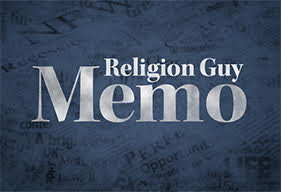Begin with the “Statement of Core Values” chiseled into stone at the Hussman School of Journalism and Media on the University of North Carolina-Chapel Hill campus. The school declares these values will “help rebuild the bond between the public and the media” — a desperate need considering the unprecedented popular distrust of news outlets lamented in this earlier GetReligion post.
Read the UNC credo for yourself. But let’s summarize key J-school principles at the nation’s third-best public university, per the latest Wall Street Journal ranking (behind Michigan and UCLA, edging U-Cal Berkeley).
* “Impartiality,” defined as “delivering the news honestly, fairly, objectively, and without personal opinion or bias,” the news media’s “greatest source of credibility.”

* “The pursuit of truth,” journalism’s “noble goal,” though the truth “is not always apparent or known immediately.” Thus journalists must not decide in advance what’s true but “report as completely and impartially as possible all verifiable facts” so audience members can discern what to think.
* Some journalism presents viewpoints, but to protect this impartiality and credibility the media and their consumers need “a sharp and clear distinction between news and opinion.”
Think of it this way. How far should American newspapering drift toward the contrary — and successful — business model of cable TV “news”? (Alongside conservative Fox News, the once-centrist CNN moved leftward though its imitation of MSNBC’s partisanship and that produces third-place audience ratings).
Walter Hussman Jr., whose name graces this J-school, donated $25 million in 2019 to foster the above credo, which appears daily in Little Rock’s Arkansas Democrat-Gazette and other papers owned by his WEHCO Media. This company operates 10 dailies, eight weeklies, seven regional magazines, nine cable TV systems and broadband and digital services, all in six states.
Now his credo is swept into the culture-war convulsions emanating from the nation’s troubled racial past and present, Black Lives Matter, “Critical Race Theory,” the murder of George Floyd and especially The New York Times Magazine’s “1619 Project,” launched in 2019 and coming soon to a school near you.
The J-school decided to grant the “1619” leader, Nikole Hannah-Jones, a “Knight Chair in Race and Investigative Journalism.” She had won the 2020 Pulitzer Prize for commentary and the Pulitzer Center, the Project’s educational sponsor, has promoted the material in thousands of public school classrooms.
The Assembly, an online magazine that covers North Carolina, broke the news on May 30 that mega-donor Hussman privately opposed Hannah-Jones’s appointment on principle. That was the evident reason the university trustees declined to grant Hannah-Jones tenure, as with such prior appointments, sparking fury from the journalism faculty.
For those who’ve been living under a rock: African slaves first landed in Britain’s Jamestown colony in 1619. The Project named for that year does not merely underscore the centrality of racist sin ever since but wants to “reframe American history” as a whole, making 1619, not 1776, “our virtual birth year.”
The Guy will avoid that back and forth warfare except to observe there’s obvious need for caution when reputable historians object. For example, Gordon Wood of Brown University, considered the leading historian of the American Revolution (another Pulitzer Prize winner), protests “perverse and distorted” interpretations, such as the fundamental “1619 Project” claim that protection of slavery was “one of the primary reasons” the colonists overthrew British rule.
Back to journalism, The Guy strives to uphold old-school, objective “just the facts” reporting as established by newspapers and wire services following the raucous partisanship of journalism in the early phase of the Republic.
But as a Time alum he also sees a role for magazine writing that blends analysis, interpretation and some opinion with factual reporting. For example, look no further than Kathrine Eban’s massive new Vanity Fair examination of the origins of COVID-19 and possible lab leaks.
What distinguishes good magazine journalism from slanted partisanship?
Two words: Shoe leather. How much hard reporting effort went into an article? Was every effort made to be fair and assess alternative viewpoints? Hussman’s credo suggests another formula: Do opinions drive the search for facts, or do the facts drive the opinions?
As an Associated Press alum, The Guy should also note staffers’ unusual demand for an explanation for firing young Phoenix reporter Emily Wilder for pro-Palestinian posts online.
The Guy draws no conclusions since AP management did not cite the offending words. But he certainly agrees with company’s social media policy that to uphold a reputation “as an unbiased source of news” employees “must refrain from declaring their views on contentious public issues” and openly support no partisan causes.
Does any of this matter in the digital-news age?
Contemplate a warning from conservative Wall Street Journalist columnist Peggy Noonan about burgeoning political conspiracy theories. Followers of such claims “don’t believe what the mainstream media tell them. Why would they? Newsrooms are undergoing their own revolution, with woke progressives vs. journalistic traditionalists, advocacy versus old school news values.” She concludes, “The woke are winning.”










